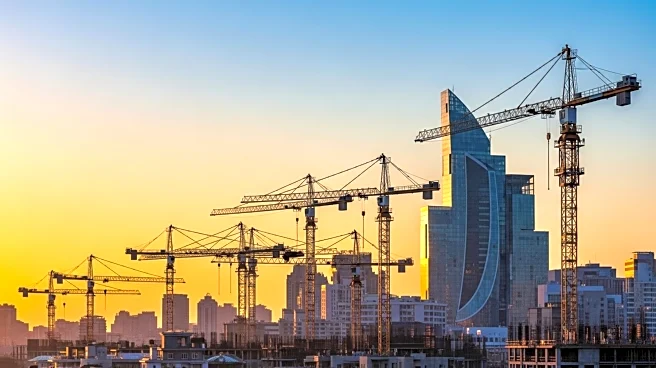What's Happening?
The U.S. housing market is experiencing a resurgence in new construction, with a notable increase in activity across several metropolitan areas. According to the U.S. Census, nearly 1.5 million new housing starts were recorded in July 2025, marking a 12.9% increase from the previous year. Realtor.com has identified the top ten metros for new housing construction, with seven of these located in the southern United States. The Fayetteville-Springdale-Rogers metro area in Northwest Arkansas ranks first due to its affordability and low climate risk, with new construction accounting for 43.1% of listings. Other southern metros such as Nashville-Davidson-Murfreesboro-Franklin, Tennessee, and McAllen-Edinburg-Mission, Texas, also feature prominently on the list, reflecting a broader trend of growth in these regions.
Why It's Important?
The increase in new housing construction in southern metros is significant for several reasons. It indicates a shift in economic activity and population growth towards these regions, potentially leading to increased investment and job creation. The affordability and lower climate risk in these areas make them attractive to builders and buyers alike, contributing to their economic vitality. This trend may also influence national housing policies and market strategies, as demand for new homes in these regions continues to rise. The growth in construction activity can stimulate local economies, providing opportunities for businesses and workers in the construction and real estate sectors.
What's Next?
As new housing construction continues to gain momentum, these southern metros may see further economic development and population growth. Local governments and businesses might need to adapt to the increased demand for infrastructure and services. Additionally, the housing market dynamics could shift, with more competition among sellers and potential changes in pricing strategies. Stakeholders in the real estate industry will likely monitor these trends closely to capitalize on emerging opportunities and address challenges related to urban planning and sustainability.
Beyond the Headlines
The surge in new housing construction in southern metros may have broader implications for regional development and cultural shifts. As more people move to these areas, there could be changes in community demographics and cultural landscapes. This growth might also prompt discussions on environmental sustainability and the impact of increased construction on local ecosystems. Long-term, these developments could influence national housing policies and economic strategies, as regions adapt to changing population dynamics and market demands.













